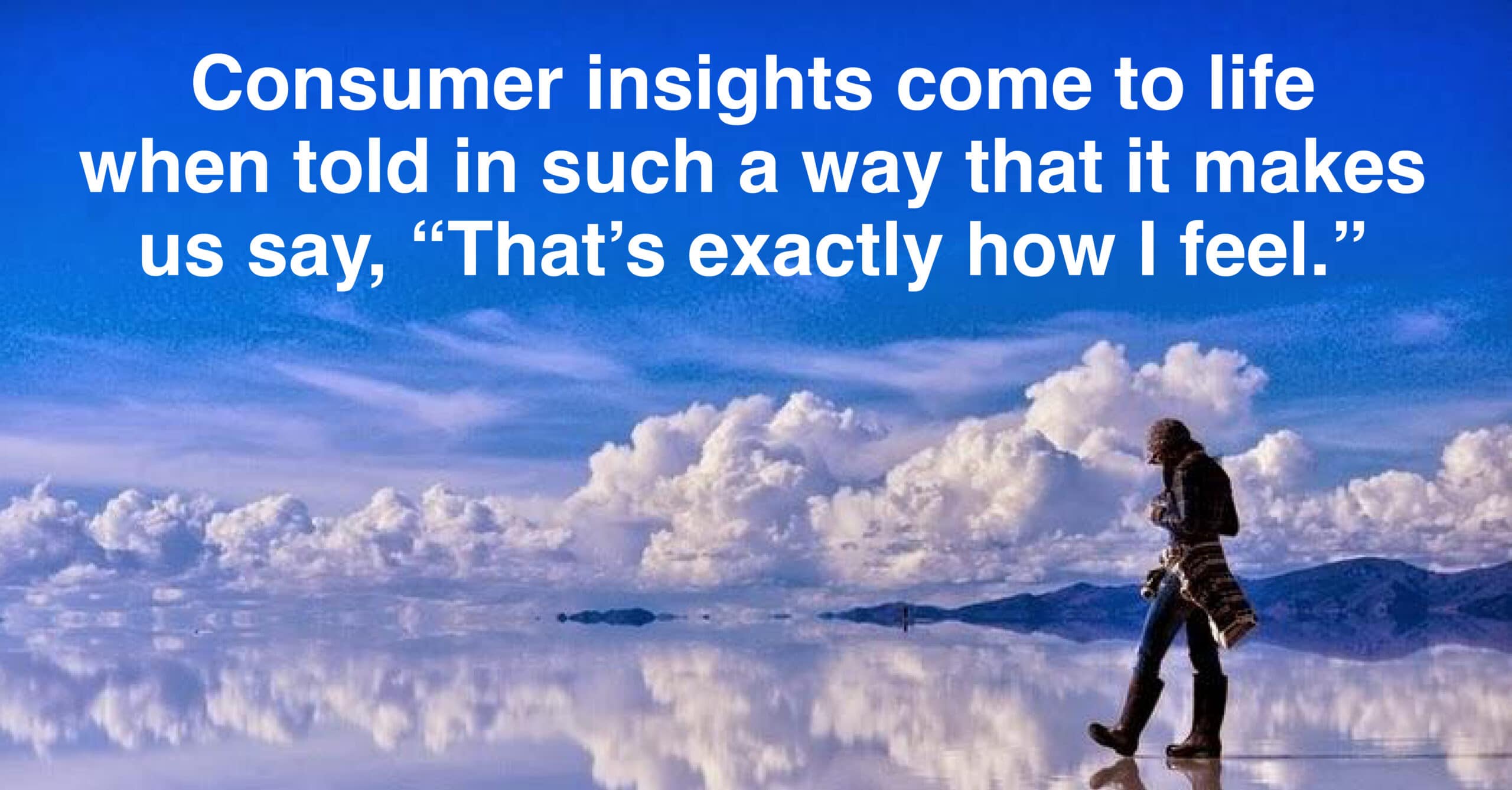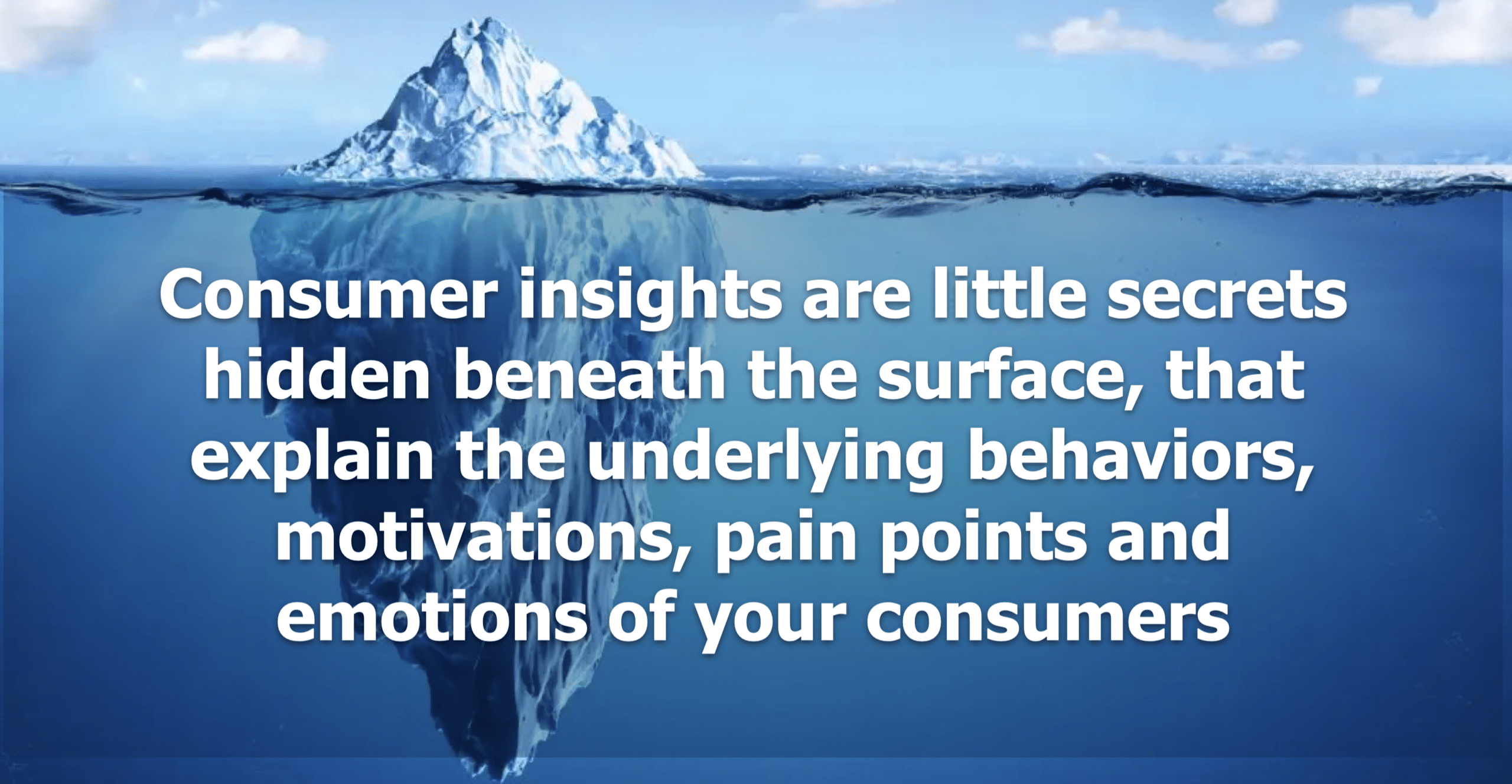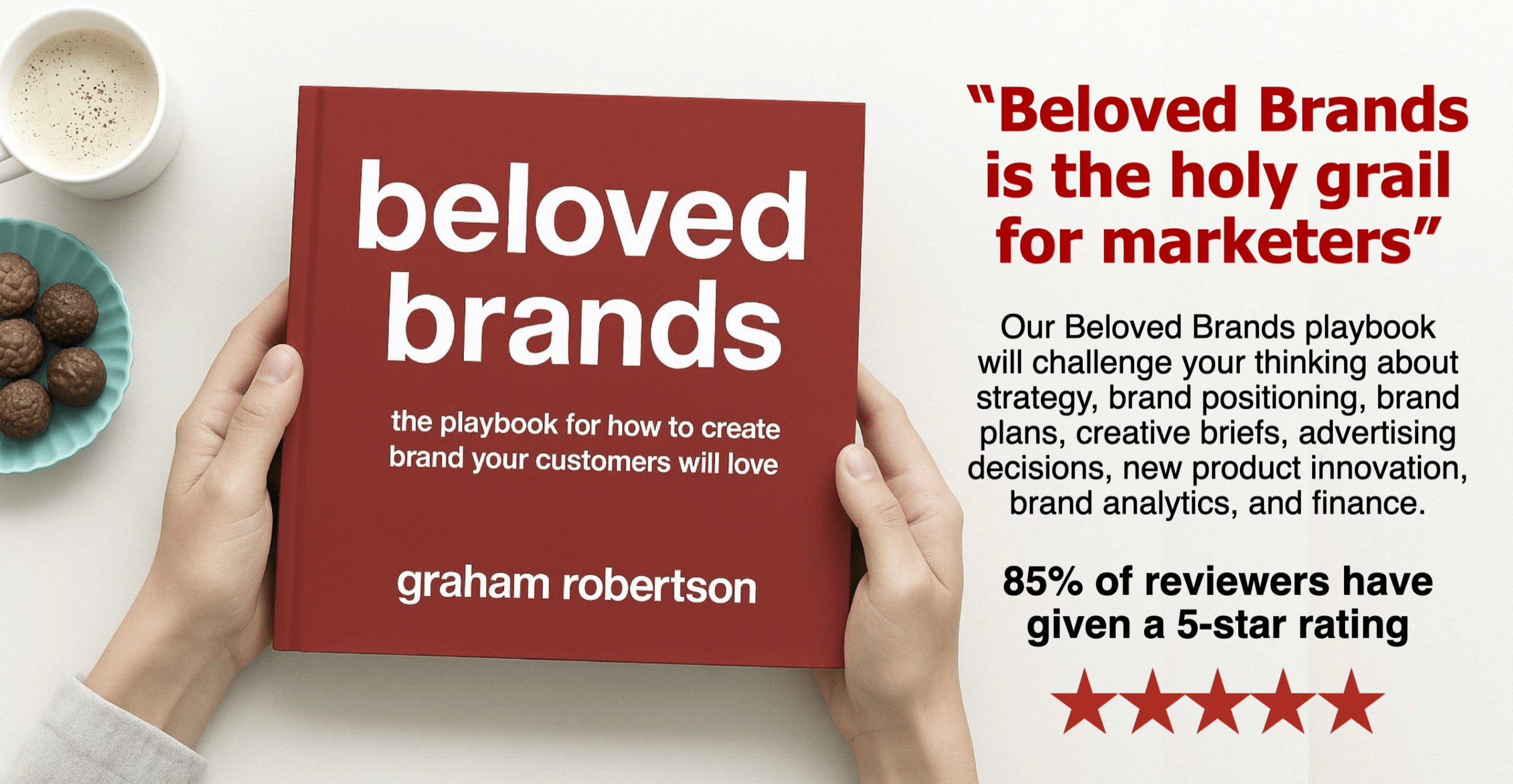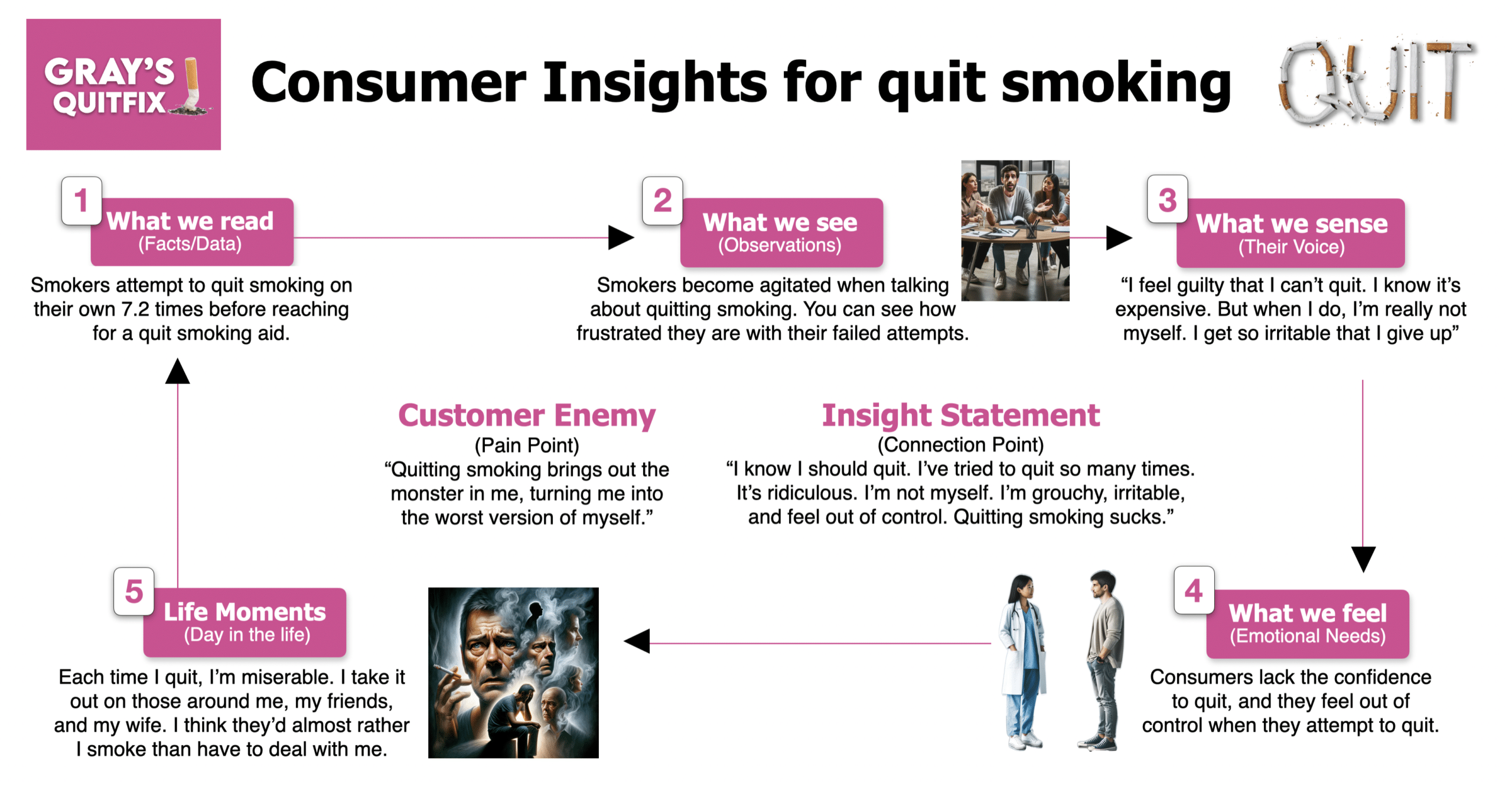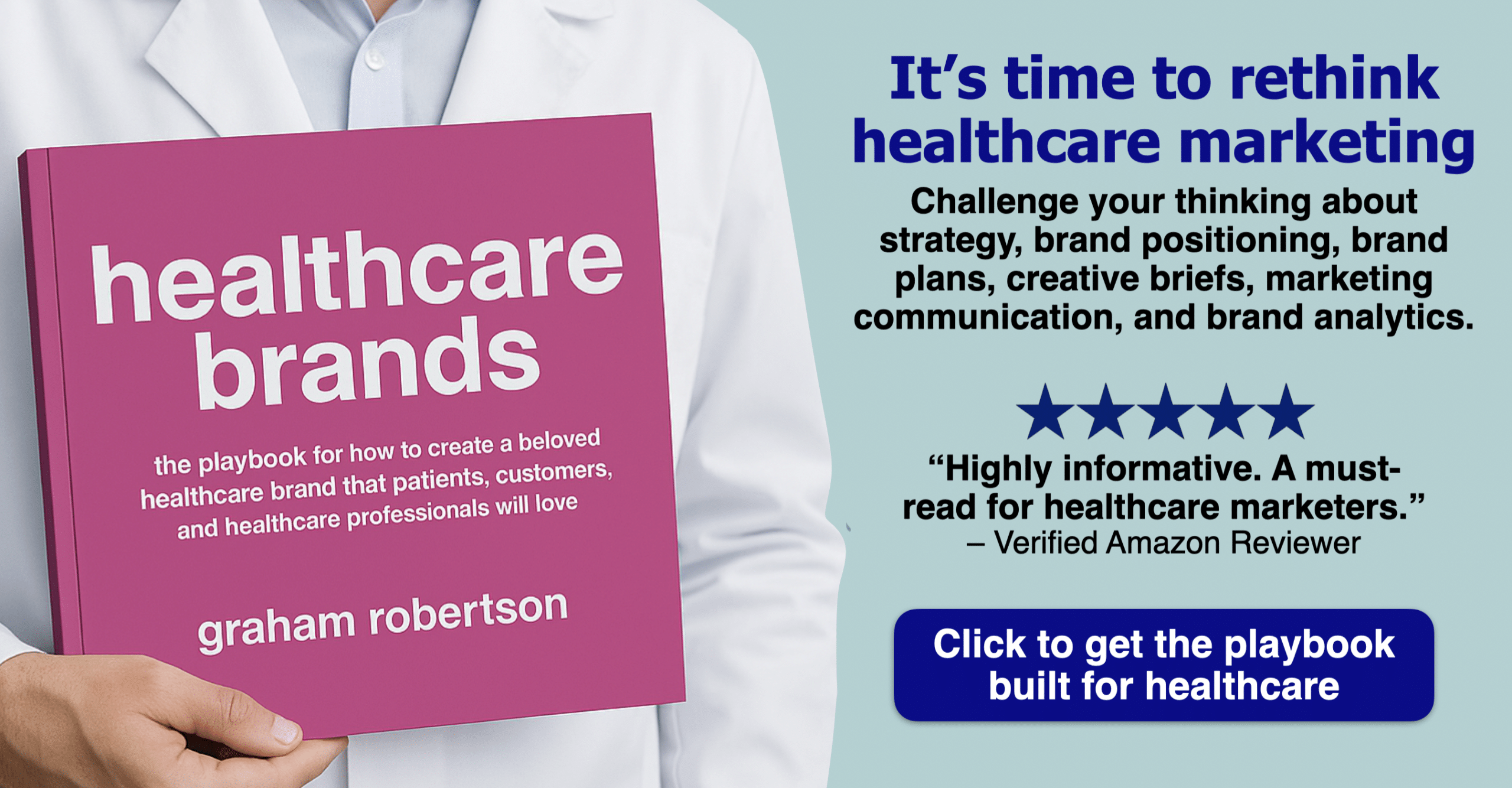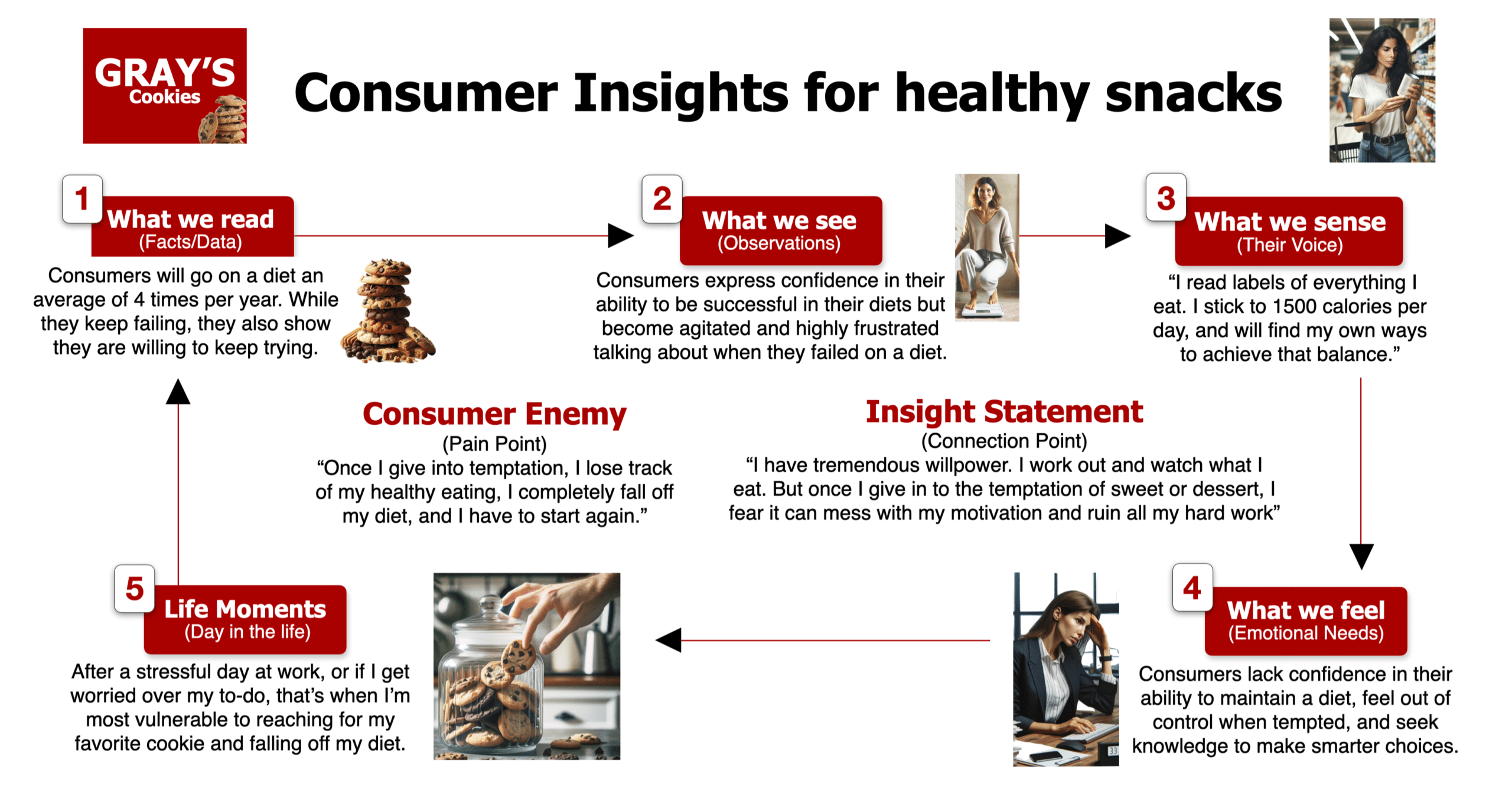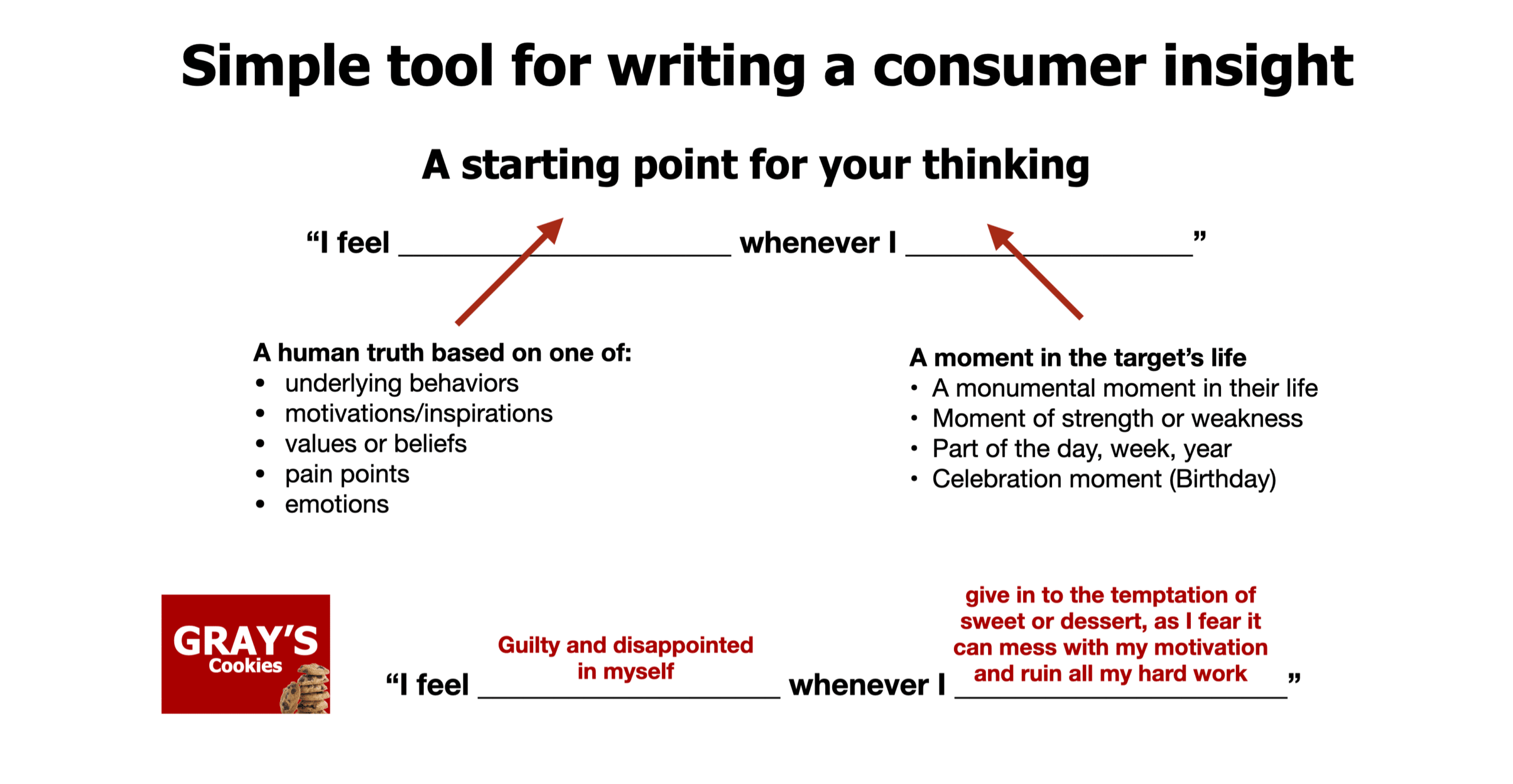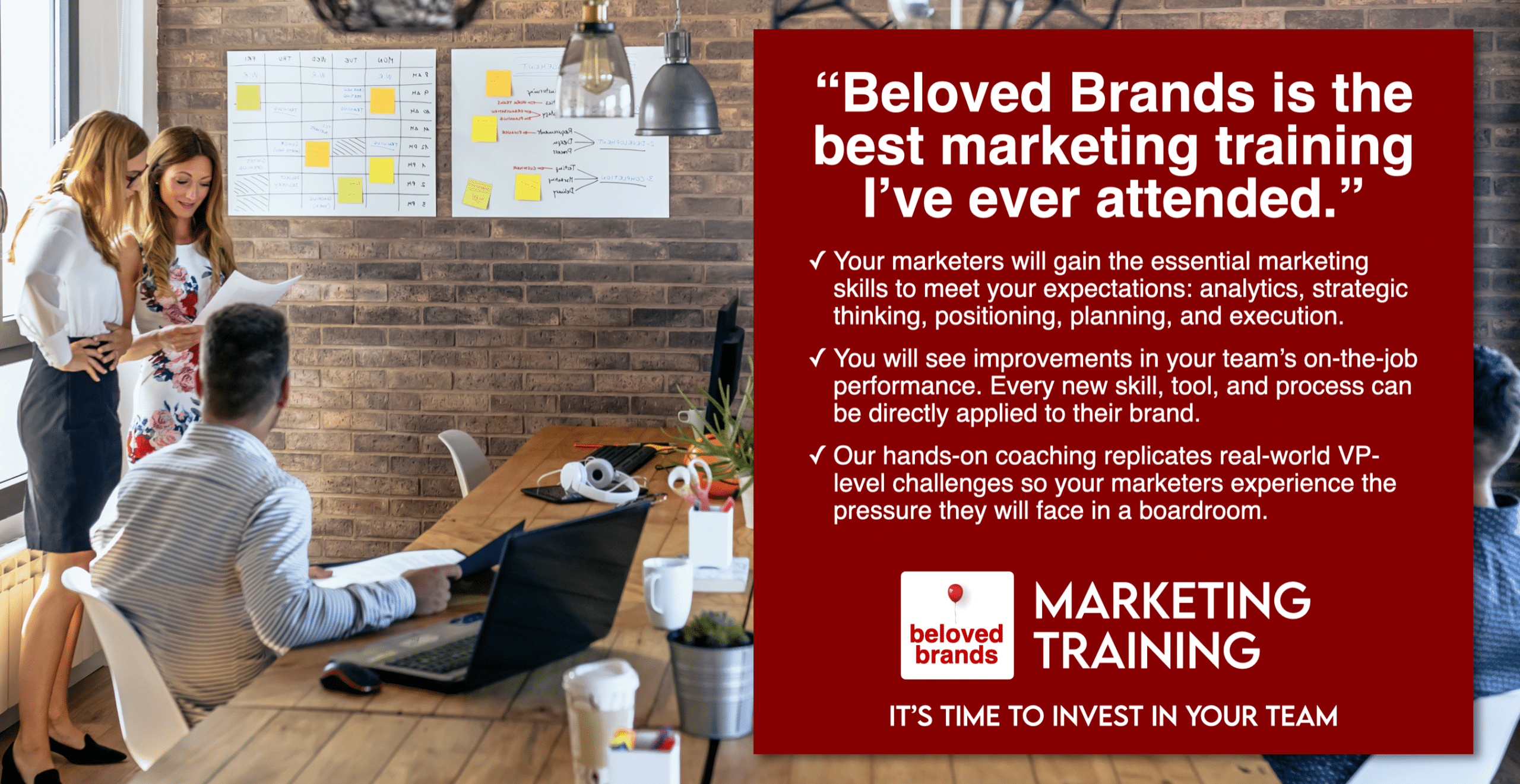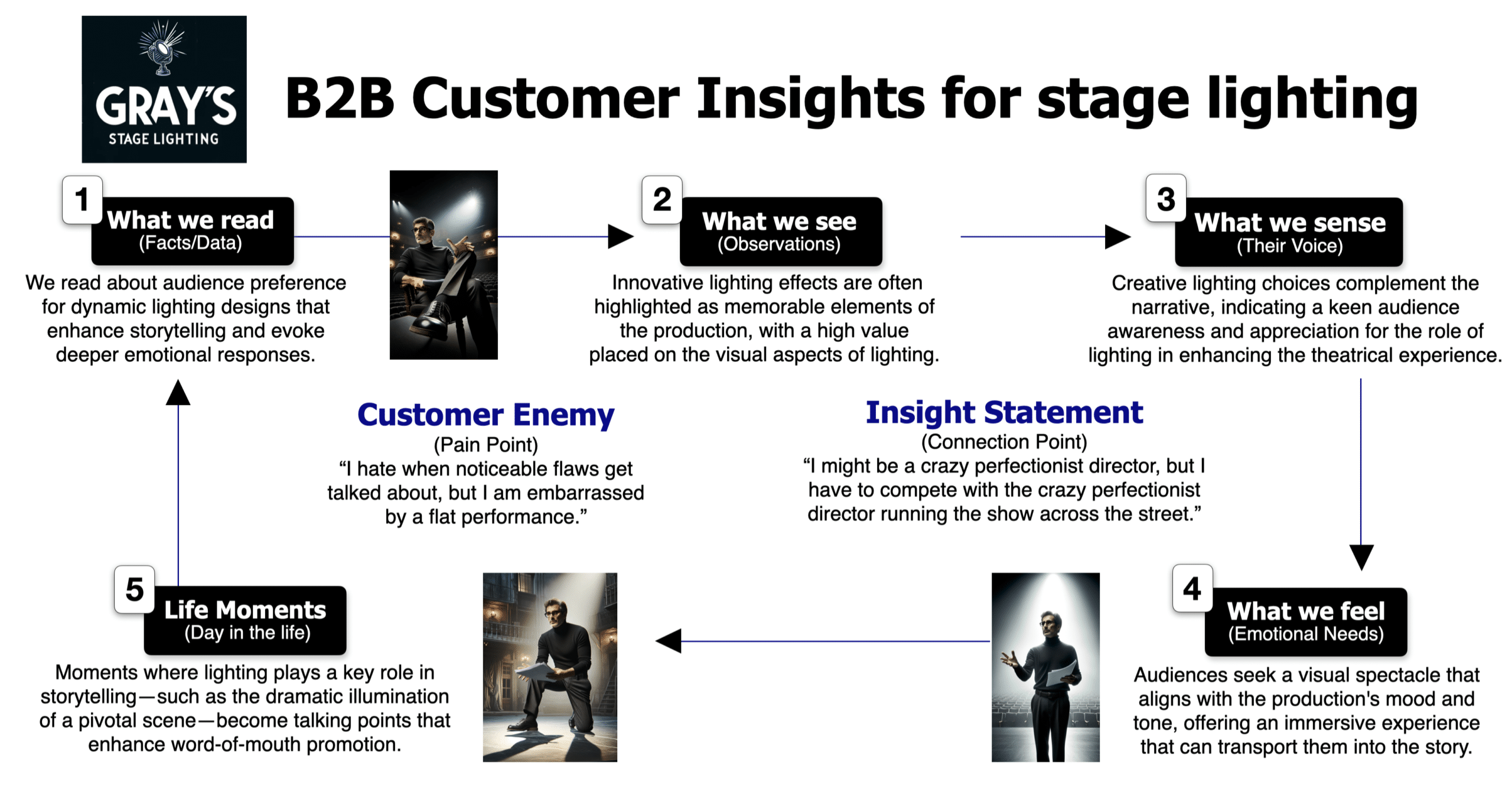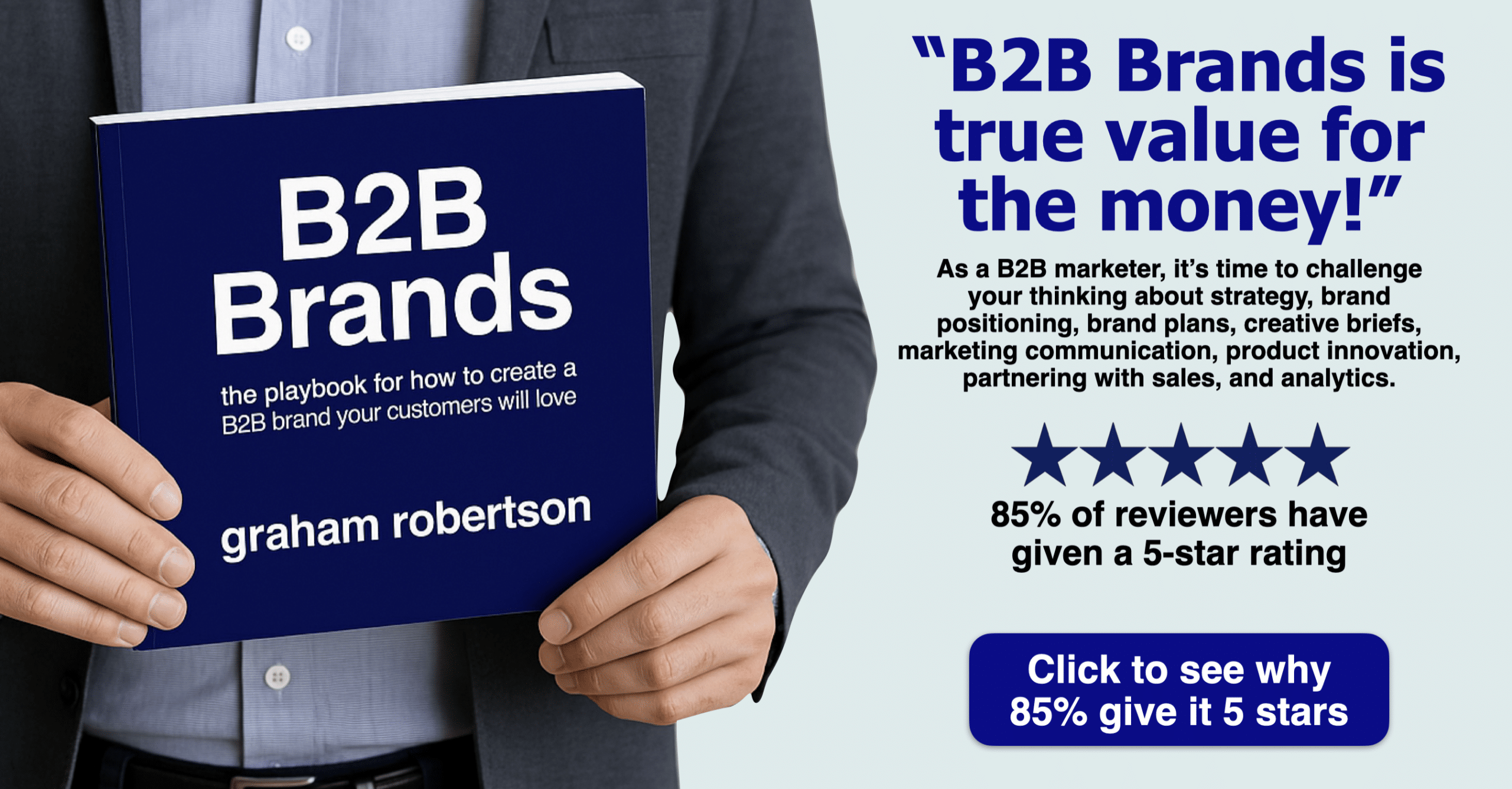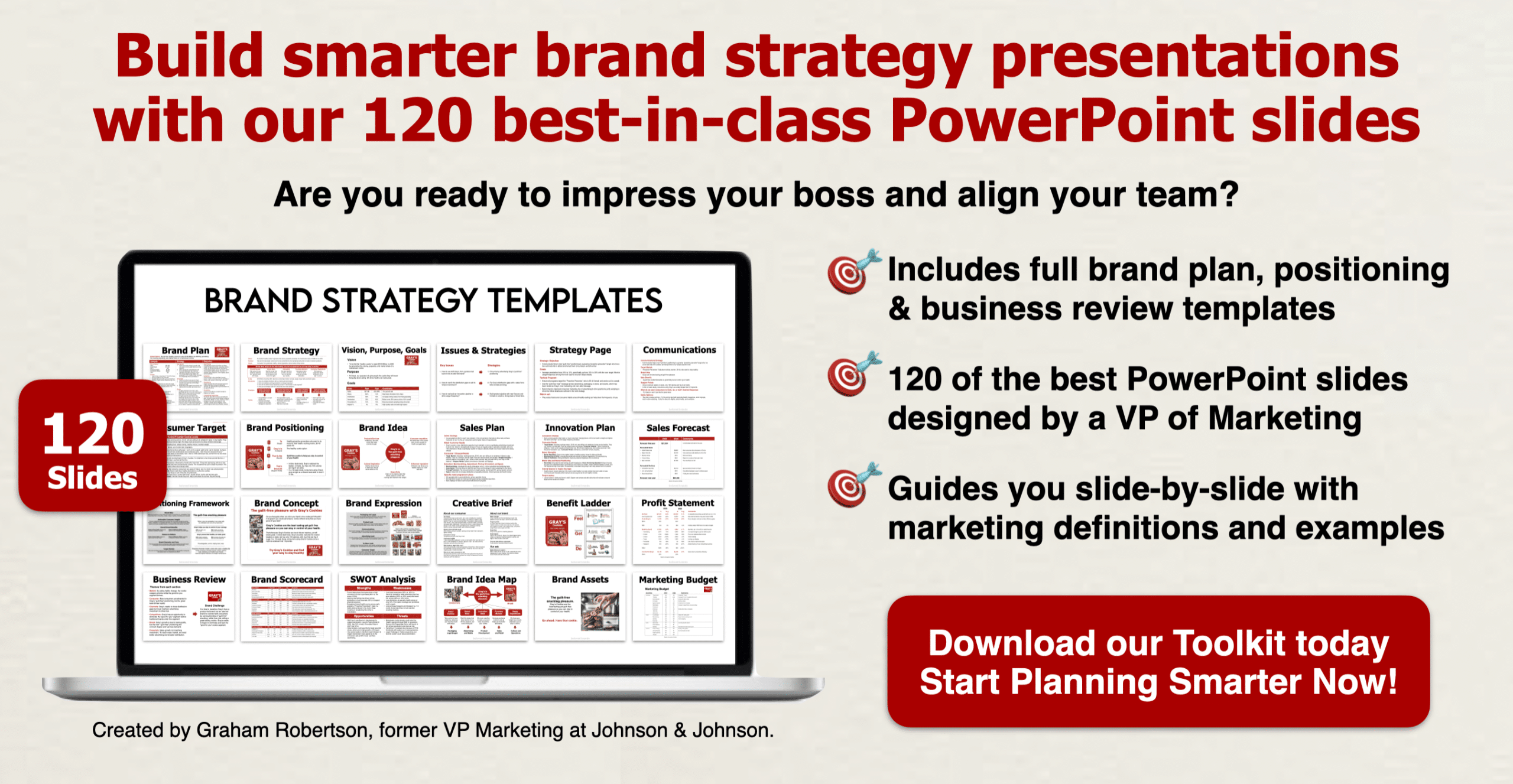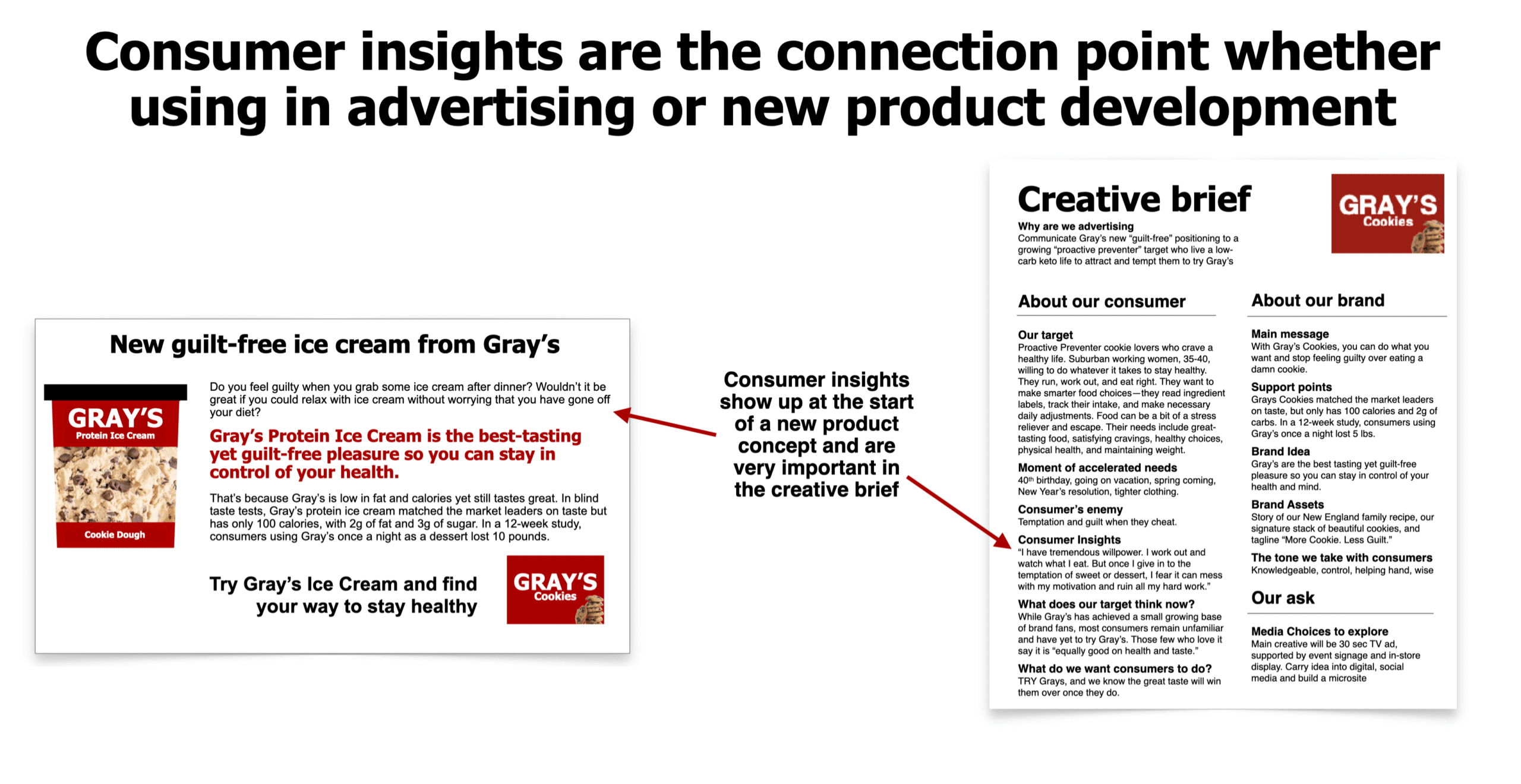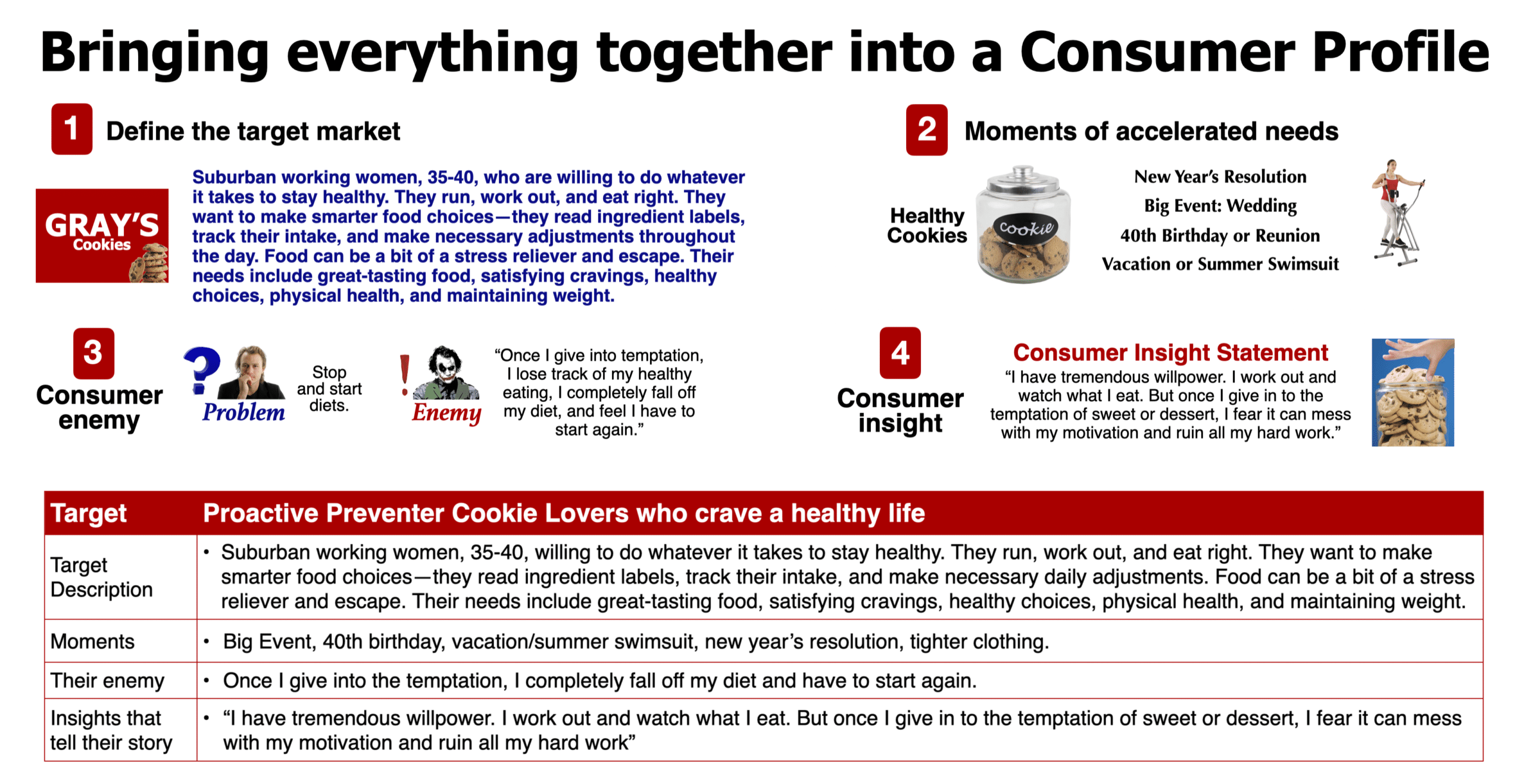Consumer insights are little secrets hidden beneath the surface. They explain the underlying behaviors, motivations, pain points, and emotions of your consumers. Your consumers may not even be able to explain the insight until you play it back to them. You want consumers to say, “Yeah, that’s exactly how I feel.” Brands must think of consumer insights as a potential competitive advantage. They are equal in importance to intellectual property.
As a brand leader, it is not about perfecting the consumer insight. Challenge yourself to always be on the lookout for insights. Read, listen, observe, and feel. Then, summarize the little secrets you find out about consumers. Hopefully, you will have people around you who can perfect the insights. The hunt for insights is as important as the find. It puts you into a consumer centric mindset.
What are consumer insights?
How to find smart ownable insights that will engage and move consumers
Go deep to understand and explain trends lying beneath the data. Think like a therapist. Listen, observe, collect, and challenge. Then, carefully draw conclusions you can play back to the consumer for assurance. Use the voice of the consumer, social media, to listen and use our emotional cheat sheet to draw conclusions.
Hunt through the data to draw hypothetical insights.
The dictionary definition of the word insight is “seeing below the surface.” Sort through every data point. Look at the market share information, panel data, testing and tracking results, brand funnel, customer sales, etc. With each data point, keep digging until you see a data break that needs explaining. Ask yourself, “So what does that mean for the consumer?” Ask over and over until you see the “Why it matters” come to life. Then, explain the cause of the consumer’s behavior.
Make sure it fits with your consumer’s life.
Try to map out a day-in-the-life. Or weekly. Or even the life stages your consumers goes through to understand their insights and pain points. Take a holistic view of the consumer. Ensure you figure out where your brand fits in with their life. Ask questions that force you to go deeper. Avoid clichés that keep you stuck at the surface level. And, stop you from getting to the sincere, rich, and meaningful consumer insights.
Find something that is an inspiring connection to engage and move consumers. We need to find that magic secret, going deep below to show the consumer we get them. Insights enable brands to connect with their consumers on a deeper emotional level, showing ‘we get you.’
When you do it right, the best consumer insights get consumers to stop and listen to your brand’s promise or brand story, engage in the latest innovation and believe the consumer experiences fits perfect with their life.
How to find consumer insights?
Our 360-degree mining for consumer insights
Build a complete picture of your consumer by looking at multiple sources. Start with market data. And, then add your observations. Add, the voice of the consumer, emotional need states, and life moments.
To illustrate, zoom in to see how to mine for consumer insights.
What we can read
Use available data such as market share results, tracking studies, or category trends. Look for underlying explanations of the data breaks. Search for the drivers, inhibitors, as well as new trends among consumers, channels, and competitors. Tell the story beneath the data.
What we see
Use observations of consumer reactions. Look at focus groups, product tests, advertising testing, and direct consumer engagements to add to the insights. Watch how consumers respond.
What we sense
Listen to the voice of the consumer (VOC). Assess consumer comments on social media, brand reviews, and market research. Listen for specific word choices. Listen for tone, and phrases the consumer’s use.
What we feel
Use observations and listening to match the emotional need states with how the use of your brand makes them feel.
Day-in-the-life moments
Map out the consumer’s life with explanations of underlying behaviors, motivations, pain points, and emotions at any moment of the day or week. Conclude how parts of their life could impact their path to purchase.
Summarize what you observe
Once you have completed all five areas of the 360-degree mining process, get in the consumer’s shoes. Observe, listen, and understand how they think, act, feel, and behave. Be empathetic to their fears, motivations, frustrations, and desires. Learn their language and use their voice. Learn the secrets that only they know, even if they cannot explain. Insights are a great way to demonstrate “We know you” because the number one reason consumers buy a brand simply that “It is a brand for me.”
M A R K E T I N G B O O K
beloved brands
the playbook for how to create a brand your consumers will love
Covering every aspect of brand management, it is no wonder that our readers reach for Beloved Brands multiple times each week to guide them through the challenges of day-to-day brand management.
Get ready for a mind-bending journey as we take you on a deep dive into your brand strategy. We’ll challenge you with thought-provoking questions designed to shake up your thinking and help you see your brand in a whole new light. And our unique process for defining your brand positioning will leave you with fresh ideas and new possibilities for how to differentiate your brand.
But we won’t just leave you with ideas – we’ll show you how to turn them into action. Learn how to write a brand plan that everyone can follow, ensuring that all stakeholders are aligned and contributing to your brand’s success. We’ll walk you through the creative execution process, from writing an inspiring brief to making smart and breakthrough decisions.
And when it comes tao analyzing your brand’s performance, we’ve got you covered. Our innovative methods will help you dive deep and uncover insights you never knew existed, giving you the knowledge you need to make the best decisions for your brand’s future.
But don’t just take our word for it – our Amazon reviews speak for themselves.
With over 85% of our customers giving us a glowing five-star rating and an overall rating of 4.8 out of 5.0, we know we’re doing something right. And with numerous weeks as the #1 bestseller in brand management, you can trust that we have the experience and expertise to help you achieve success.
Ready to join the ranks of the Beloved Brands community? Order our book on Amazon, Rakuten Kobo, or Apple and start your journey towards brand success today.
Examples of consumer insights
Case study: Consumer insights for quitting smoking
When I worked in the quit-smoking categories, I used the 360-degree mining for consumer insights. I have never smoked in my life. So all of this was new and forced me to listen, observe, and go deeper.
To illustrate, zoom in to see an example of consumer insights for those consumers wanting to quit smoking.
The starting data point was, “Studies show smokers will try to quit cold-turkey over seven times before reaching for a smoking aid to help them quit.” It speaks to how hard it is to quit, and how many times it takes to achieve success. Regarding smoking aids, it shows how the product is the last resort.
Adding observations from focus groups. I could see how smokers become very agitated. We held two-hour focus groups and talked non-stop about what could get them to quit smoking. In the first hour, they were polite. But after one hour without a cigarette, I could see their agitation grow to a boiling point.
Keep watching, listening, and reading.
When I listened further, I heard them say, “I feel guilty I can’t quit” or “I know I should quit.” Other phrases included, “Whenever I quit, I feel I’m not myself. I get so irritable that I give up.” Or “I wish smoking wasn’t so bad for you because quitting smoking sucks.” These are some of the underlying feelings coming out, expressed in their words.
Using the emotional need states, I gravitated to the consumer’s lack of optimism or confidence to quit, how smokers feel out of control whenever they try to quit, and how they feel not themselves.
Observing how quitting smoking fits into their lives, I could see how they take their misery from trying to quit out on those around them. They linked the moment of quitting smoking with their “worst version of themselves coming out” and talked about “the monster.” Some said their spouse or friends had told them they would prefer they keep smoking rather than having to deal with this terrible version of themselves.
Consumer insight (connection point):
“I know I should quit. I’ve tried to quit smoking so many times, it’s ridiculous. I’m not myself. I’m grouchy, irritable, and feel out of control. Quitting smoking sucks!” When I shared this secret back with smokers who want to quit, they say, “Yup, that’s exactly how I feel.”
Consumer enemy (pain point):
“I fear quitting smoking will bring out the monster in me, turning me into the worst version of myself.”
Simple tool for writing a consumer insight
Below is a simple tool we use in our workshops. Once you have done all the homework with the gathering of insights, we draw out the insight statements. In the words of your consumer, “I feel _____ whenever I _____.” The first blank is the human truth, and the second blank is a moment in the targets life.
To illustrate, zoom in to see an example of consumer insights for those consumers wanting to quit smoking.
Consumer brand example of Consumer Insights
Below is an example of the consumers insights we see in the healthy cookies segment.
To illustrate, zoom in to see an example of consumer insights for those consumers wanting healthier food options.
Below is a simple tool we use in our workshops. Once you have done all the homework with the gathering of insights, we draw out the insight statements. In the words of your consumer, “I feel _____ whenever I _____.” The first blank is the human truth, and the second blank is a moment in the targets life.
To illustrate, zoom in to see an example of consumer insights for those consumers wanting healthier food options.
B2B brand example of Customer Insights
Our tool works equally well for a B2B brand. In this case, you are gathering a customer insight. For Gray’s Dental Instruments, the customer is a dental professional.
To illustrate, zoom in to see an example of B2B customer insights for those dental professionals.
The use of a consumer enemy
While products solve small problems, the best brands beat down the enemies that torment their consumers every day. Put yourself in the shoes of your consumer and find their most significant frustration pain point they feel no one is even noticing or addressing.
The Starbucks mom
Put yourself in the shoes of the Starbucks consumer. As a 38-year-old mom of two, she rises at 6:15 a.m. to ready the family for the day. By 7:45 a.m., she’s dropped the kids off at daycare and school, then dashes to work. Driving a van, I ferry them to soccer, dance, tutoring, and hockey. Embraced by hugs at the end of the day, I fall into bed after tucking them in, spent. I need a break.
Who is the enemy of the Starbucks mom? A hectic life they can’t escape
The Starbucks brand fights her enemy, with a 15-minute moment of escape between work and home. Starbucks has no children’s playground, just lovely leather seats. No loud screams, just soft acoustic music. The cool 21-year-old college student not only knows her name but her favorite drink. Starbucks becomes that moment in the day when they can finally escape all the deadlines, and realities of life.
Your consumer’s enemy
If you want to understand your consumer’s pain points, think of how you would project their enemy and express how your brand fights that enemy on their behalf. Shifting from solving a rational consumer problem to beating down an emotional consumer enemy is a great starting point to reach into the emotional need states of your consumer.
Consumer Enemy Cheatsheet
We have taken our emotional consumer benefits and turned them into potential emotional enemies that your consumers are facing. Use this as a starting point to identify the enemy that your consumer faces.
For Tide, while grass stains are a problem, the judgment of a mother-in-law is far worse. Yes, drivers care about overall safety, their bigger concern is mindless other drivers that scares them into buying a safer car like Volvo. For an adventure travel company, your consumer could be bored with life choices. When the consumer tries to quit smoking, they feel pessimistic, out of control, and doubt whether they can successfully quit.
To explore, click on the diagram to zoom in and find the enemies that your consumer is facing.
Our 12 zones of consumer enemies
1. Feeling Stupid:
- Brand Response: Offer simple, intuitive solutions. Educate without patronizing.
- Example: Smartphones with user-friendly interfaces and easy-to-understand manuals.
2. Feeling Pessimistic:
- Brand Response: Inspire hope and positivity. Share success stories.
- Example: Self-help books or wellness apps that highlight positive affirmations and success journeys.
3. Feeling Uneasy:
- Brand Response: Provide safety, assurance, and reliability.
- Example: Home security systems that ensure peace of mind.
4. Feeling Trapped:
- Brand Response: Offer freedom, flexibility, or new experiences.
- Example: Travel agencies that highlight adventurous escapes or online courses for new career paths.
5. Feeling Overlooked:
- Brand Response: Personalize experiences. Make them feel seen and valued.
- Example: Loyalty programs that reward frequent customers with tailored recommendations.
6. Feeling Rejected:
- Brand Response: Create communities and platforms where they belong.
- Example: Social media groups or clubs based on shared interests or experiences.
7. Feeling Out of Control:
- Brand Response: Give them tools to regain control and stability.
- Example: Financial planning apps that help manage budgets and savings.
8. Lack of Energy:
- Brand Response: Offer rejuvenation, vitality, and endurance.
- Example: Energy drinks or wellness supplements that boost energy levels.
9. Feeling Embarrassed:
- Brand Response: Offer discreet solutions or help them embrace their imperfections.
- Example: Skincare products for sensitive issues or campaigns that celebrate diverse beauty standards.
10. Feeling Insecure:
- Brand Response: Boost confidence and self-worth.
- Example: Clothing brands that promote body positivity or self-defense classes that empower.
11. Feeling Isolated:
- Brand Response: Connect them to larger communities or shared experiences.
- Example: Virtual event platforms that host group activities or apps connecting like-minded individuals.
12. Going Against Beliefs:
- Brand Response: Emphasize values, authenticity, and integrity.
- Example: Sustainable brands that prioritize eco-friendly practices or brands that champion social causes.
How to use consumer insights in advertising
How those consumer insights play out for Nicoderm
Based on those consumer insights for quitting smoking, this is a TV ad we made when I was at Johnson and Johnson. This spot was one of the highest tested spots for Ipsos consumer testing, and it won J&J’s award for best global ad back in 2009. See how we bring that “I become the worst version of myself” consumer insight to life in the TV ad.
Nicoderm Flight Attendant TV Ad
To view this ad, use the arrow buttons.
Consumer insights should show up everywhere on the brand
Consumer insights help you connect with what’s going on with your consumer. You should use consumer insights on every new product innovation concept or every creative brief. Use them with your sales teams to help them sell or service delivery teams to help them deliver exceptional consumer experiences. .
To illustrate, zoom in to see more details.
Building out a consumer profile for your target
- Define the target
- Layer in moments of accelerated needs
- Come up with a unique consumer enemy that says we get you.
- Complete the profile with a consumer insight that will connect.
To illustrate, zoom in to see an example of consumer insights for those consumers wanting healthier food options.
Consumer insights in advertising
Consumer insights come to life through your advertising when told in such a captivating way that makes consumers stop and say “Hmmm, that’s exactly how I feel. I thought I was the only one who felt like that.”
That’s why we laugh when seeing the way that consumer insight is projected with humor. That is why we get goose bumps when a consumer insight is projected with inspiration. And, that’s why we cry when the consumer insight comes alive through real-life drama.
